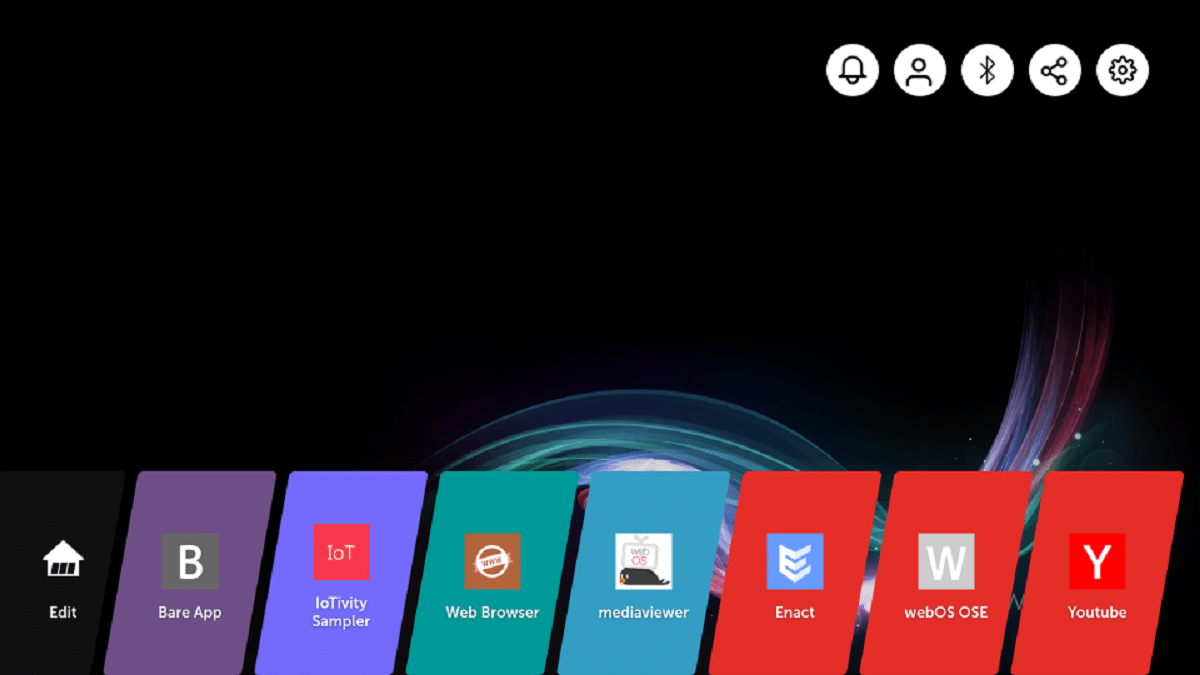
The launch of the new version of the open platform webOS Open Source Edition 2.10 in which one of the most outstanding novelties is the new storage access framework that allows access to different types of storage (either internal or in the cloud).
For those who are unfamiliar with WebOS Open Source Edition, you should know that can be used on a variety of portable devices, dashboards, and infotainment systems for automobiles. Raspberry Pi 4 boards are considered the reference hardware platform.
About WebOS
WebOS was originally developed by Palm in 2008 and was used in the Palm Pre and Pixie smartphones. The acquisition of Palm in 2010 passed the platform to Hewlett-Packard, after which HP tried to use the platform in its printers, tablets, laptops, and PCs.
In 2012, HP announced the transfer of webOS to an open source project independent and in 2013 began to open the source code of its components. In 2018, the webOS Open Source Edition project was founded, Through which LG tried to return to an open development model, attract other participants and expand the range of webOS-compatible devices.
The key components of webOS are the System and Application Manager (SAM), which is responsible for running applications and services, and the Luna Surface Manager (LSM), which forms the user interface. The components are written using the Qt framework and the Chromium browser engine.
Rendering is done through a composite manager using the Wayland protocol. To develop custom applications it is proposed to use web technologies (CSS, HTML5 and JavaScript) and the React-based Enact framework, but it is also possible to create C and C ++ programs with a Qt-based interface. The custom shell and integrated graphics applications are primarily implemented as native programs written with QML technology.
To store data in a structured form using the JSON format, DB8 storage is used, which uses the LevelDB database as a backend. Uses systemd-based bootd for initialization. To process multimedia content, the uMediaServer and Media Display Controller (MDC) subsystems are offered, PulseAudio is used as the sound server. To automatically update firmware, OSTree and Atomic Partition Replacement are used
Main new features of WebOS Open Source Edition 2.10
In this new version we can find that storage access framework implemented, which provides a single interface to access various storages, including internal storage, USB drives, and cloud storage systems (so far only Google Drive is supported).
The frame allows, through a common user interface, to view and open documents, images, and files from all configured storage providers.
The browser engine provides encrypted storage of session and authentication cookies, In addition, a new Peripheral Manager service has been added to manage peripheral devices, which supports interaction with devices through GPIO, SPI, I2C and UART interfaces. The service allows you to organize the management of new devices without changing the source code of the platform.
It is also highlighted that the capabilities of the ACG model have been expanded (Access Control Groups), which is used to restrict the permissions of the services that use Luna Bus.
In the new version of webOS Open Source Edition 2.10, all legacy services that previously used the previous security model have been migrated to ACG, plus ACG rules syntax has been changed.
Finally if you are interested in knowing more about it about this new released version, you can check the details In the following link.
How to get webOS Open Source Edition 2.10?
For those who are interested in being able to use webOS Open Source Edition, it is necessary to generate the system image for their device, for this they can consult the steps to follow from the following link.